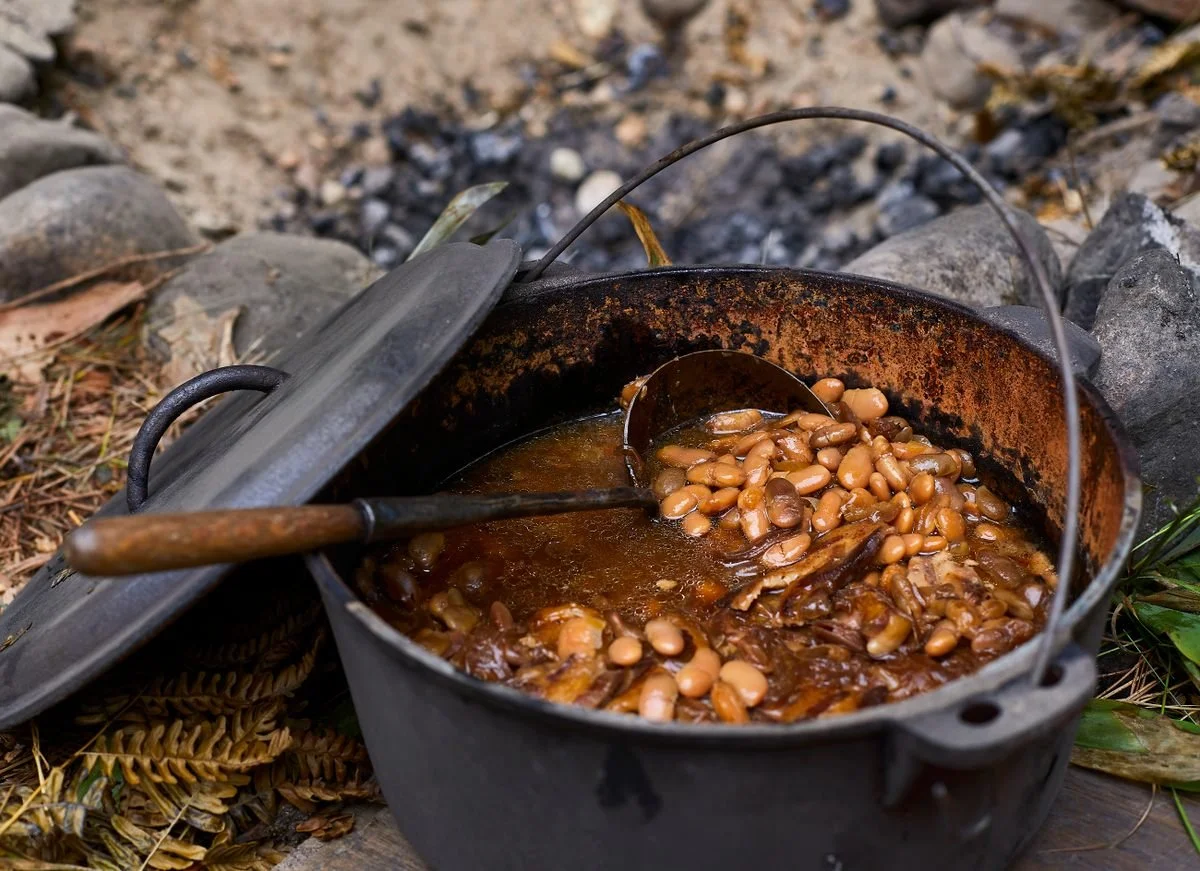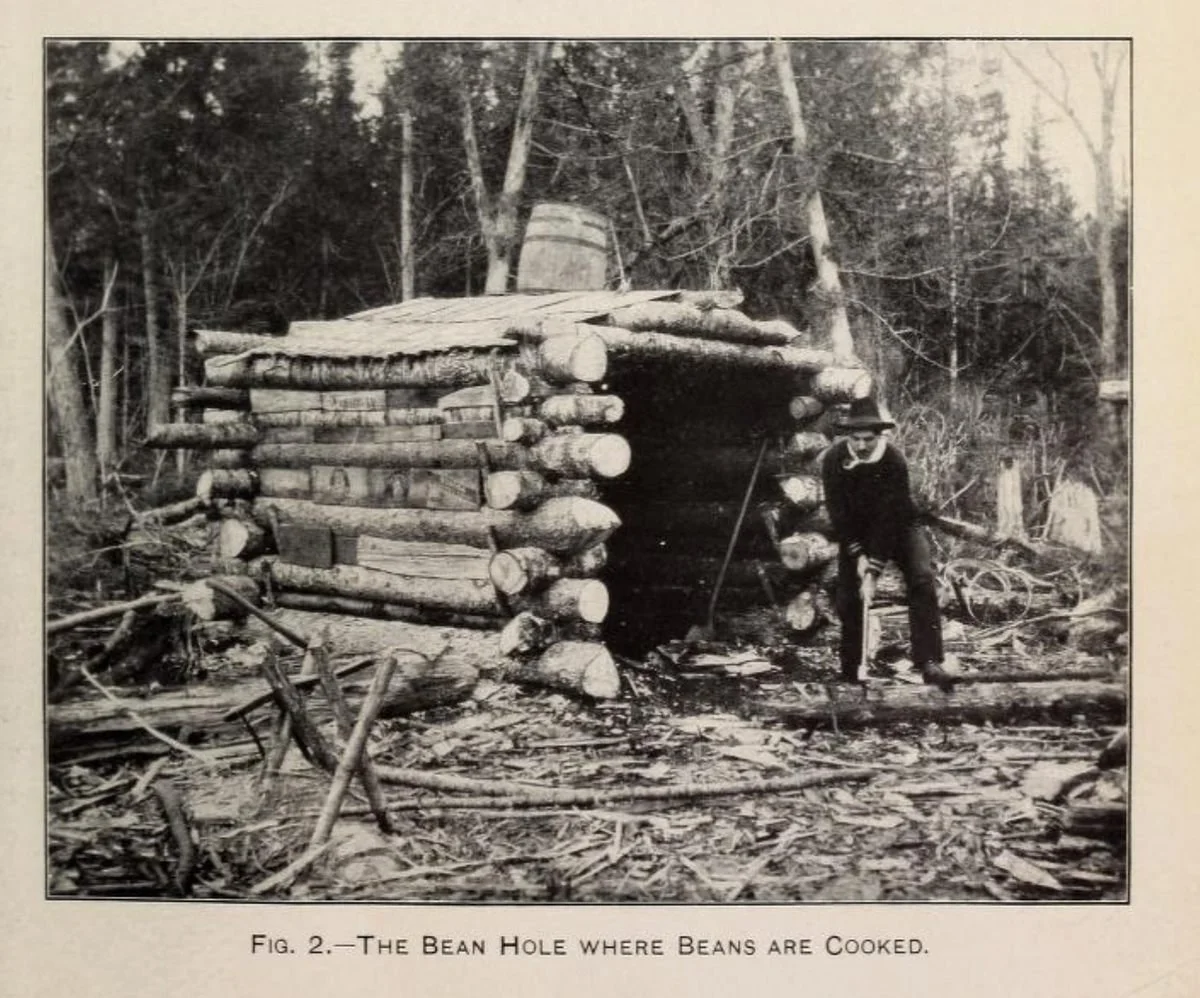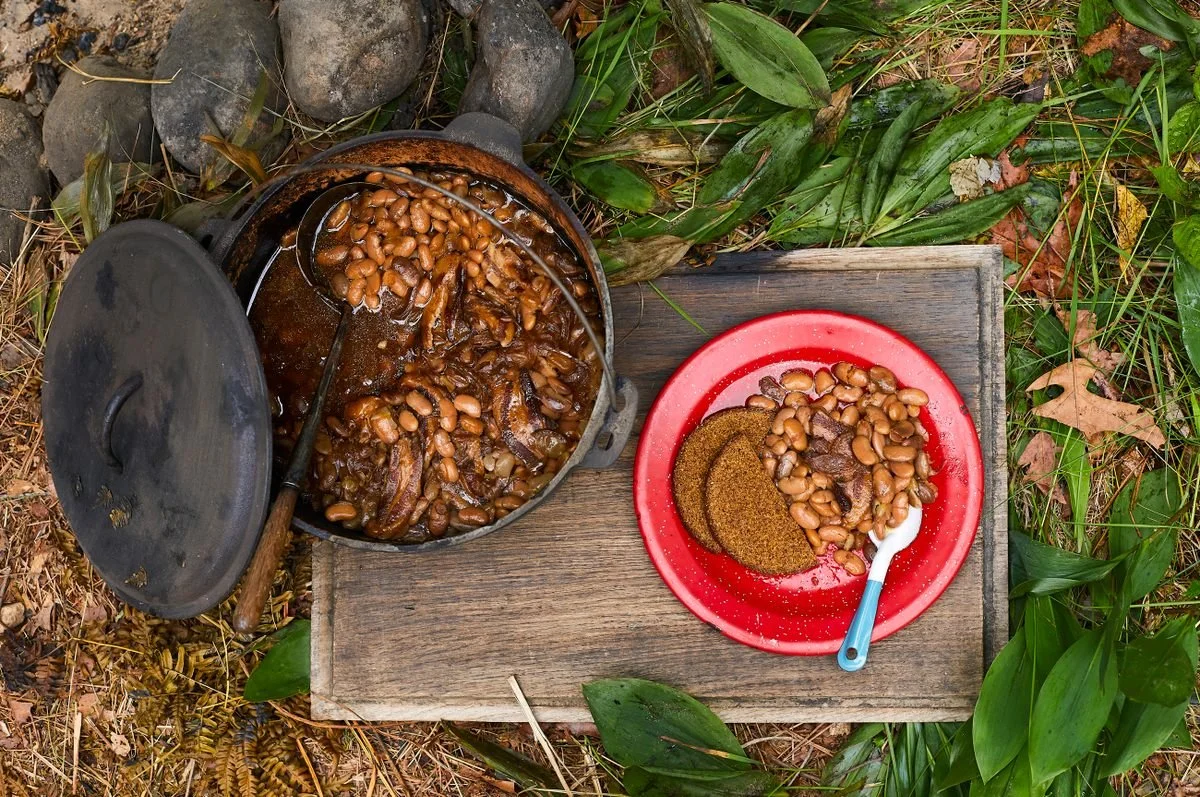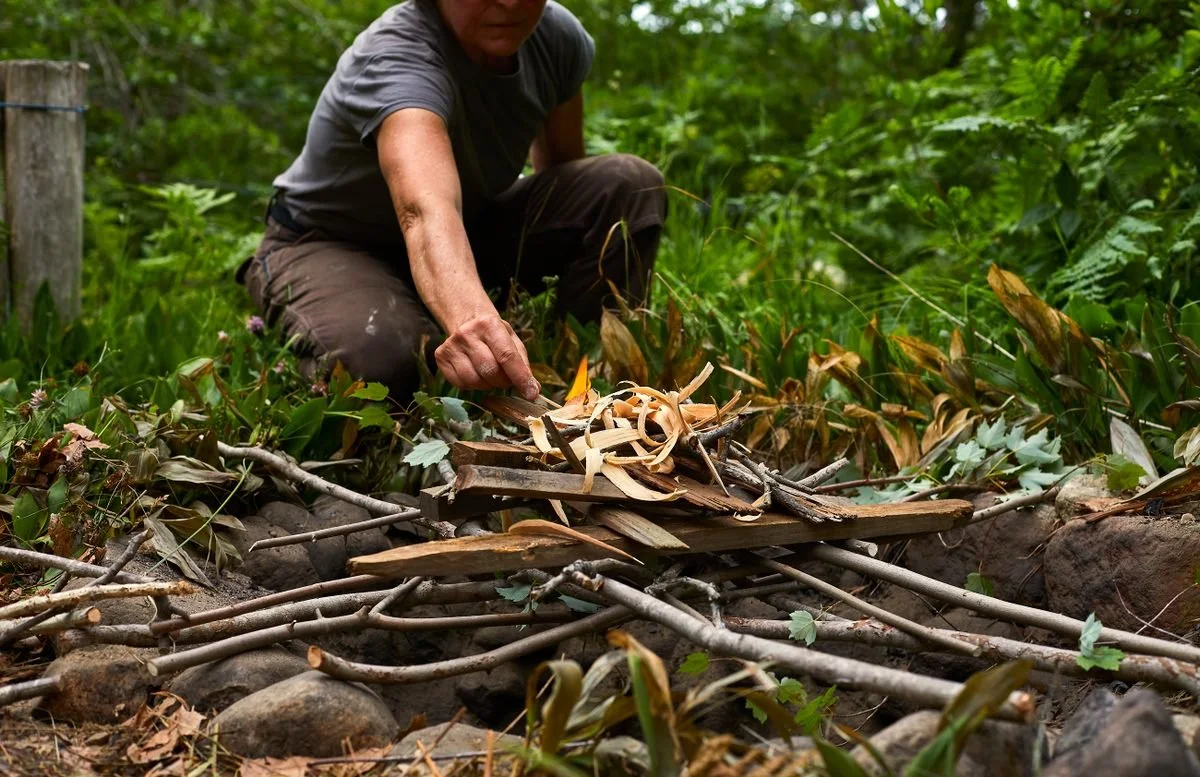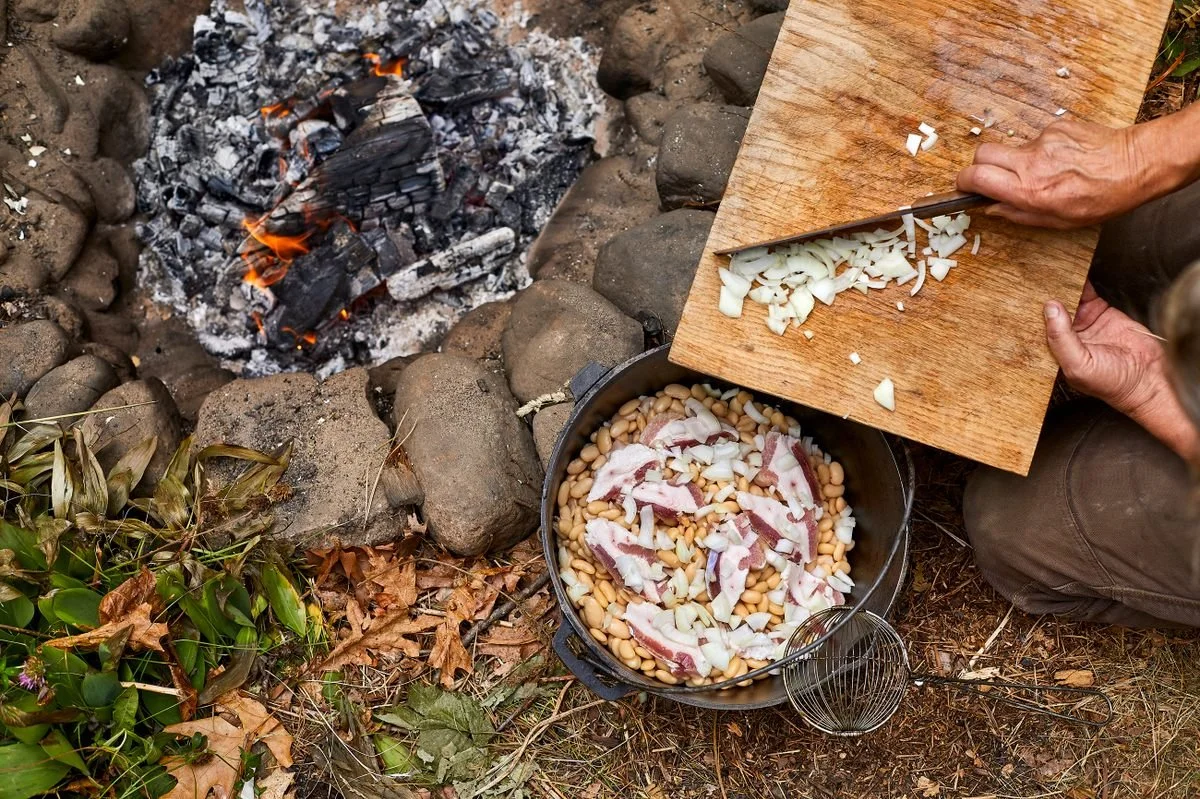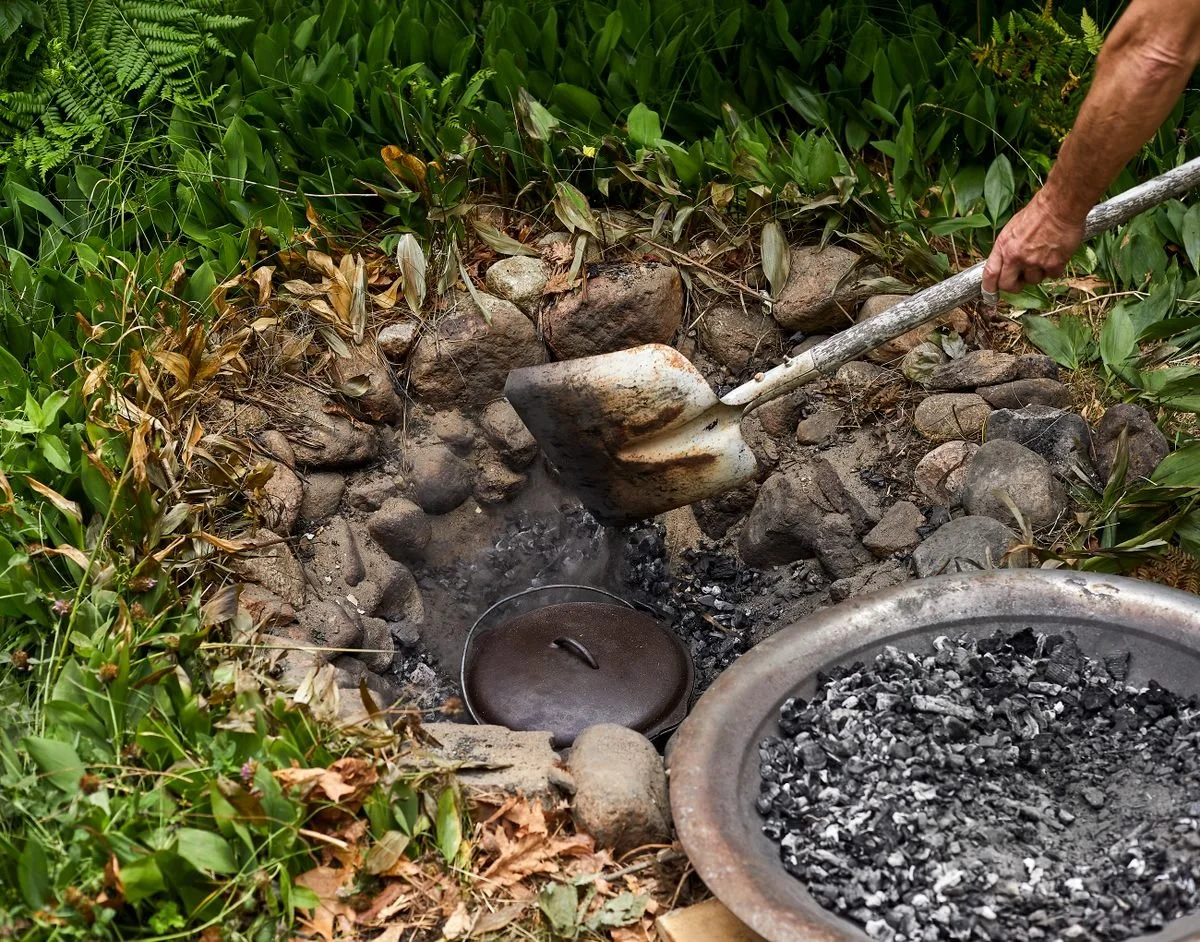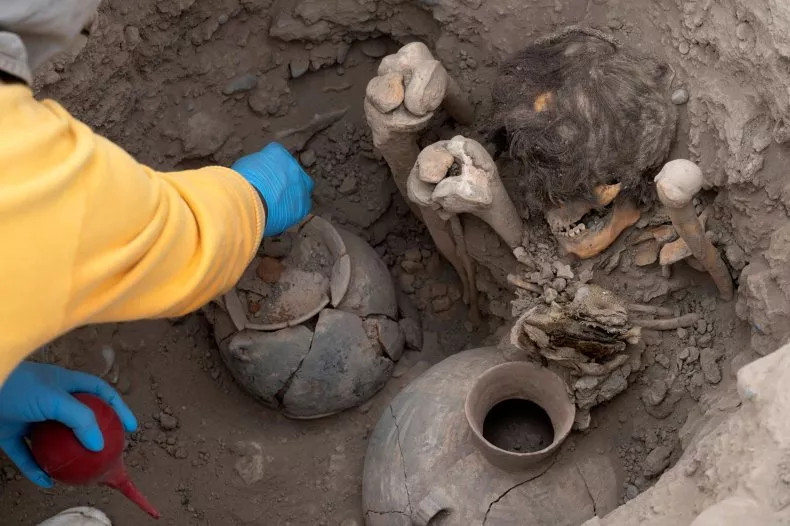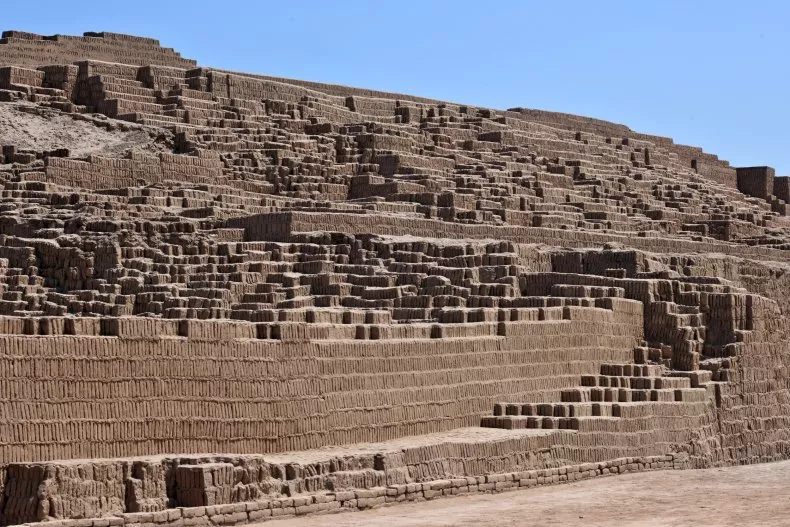In the video below curator of ancient writing Ilona Regulski is going to teach you how to read your first sentence in ancient Egyptian hieroglyphs. Enjoy!
Archaeologists have found anthropomorphic figurines in the Aztec Templo Mayor
Archaeologists from the Templo Mayor project and the National Institute of Anthropology and History (INAH) have found anthropomorphic figurines placed as an offering at Templo Mayor in Mexico City.
Templo Mayor was the heart of a temple complex in Tenochtitlan, the capital of the Aztec Empire. The temple was called the huey teocalli in the Nahuatl language and was dedicated to Huitzilopochtli, the god of war, and Tlaloc, god of rain and agriculture.
Construction of the temple began sometime after AD 1325, but was destroyed by the Spanish in AD 1521 following the conquest of Tenochtitlan. The present-day archaeological site lies to the northeast of the Zocalo, or main plaza of Mexico City, on the corner of what is now the streets of Seminario and Justo Sierra.
Archaeologist excavating at Templo Mayor have found a stone chest known as tepetlacalli in Nahuatl, containing 15 anthropomorphic figurines and numerous green stone beads, snails, shells and marine corals.
Polynesian Origins: DNA, Migrations and History
Oceania was the last region to be settled by humans and the last part of Oceania to be settled by humans was Polynesia. Polynesians are famous for their voyages to remote islands in distant parts of the Pacific. Using outrigger canoes, they founded a society across islands stretching in a triangle from the Hawaiian Islands to Easter Island to New Zealand. That society was reasonably well-connected by trade, language, culture, and religion, despite its distribution over such a large area.
One major question today is where did the Polynesians originally come from? Several theories have been proposed over the years, but one which is gaining ground is that the Polynesians originated from Taiwan, parts of Papua New Guinea, and Southeast Asia. Another intriguing area of study is the genetic connection between Polynesians and South Americans.
Could the Polynesians Have Origins in South America?
One early theory of the origin of Polynesians is that they came from South America and sailed west, eventually reaching the Polynesian triangle. This was proposed by the archaeologist, writer, and explorer Thor Heyerdahl , who even constructed a Polynesian balsa wood raft and, with a team, sailed it west of Easter Island from the South American coast. This demonstrated the feasibility of using a primitive craft to cross the Pacific.
The thing to remember about experimental archaeology is that just because something could have theoretically been done doesn’t mean that it actually happened that way. Although it is plausible that Polynesia was settled by ancient South Americans; all the genetic, linguistic, and ethnographic evidence points toward a predominantly southeast Asian origin.
Eat Like a Lumberjack in the 19th Century With This Recipe
In the middle of the Maine winter in 1902, a young scientist convinced six lumberjacks to act as his test subjects. He recorded every morsel of food the men were planning to consume for a single 18-meal workweek. He then gathered all the pertinent excrement, put them in "museum jars," and stored them in a snowbank stash. He also put together and frozen samples of each type of food supplied to the men with the camp cook's help. He then brought all of these ice jars to the University of Maine at Orono's Maine Agricultural Experiment Station for examination.
A group of men pose at Russell Camp, another camp for loggers in Maine, circa 1900. PUBLIC DOMAIN
The study was a part of a wave of early investigations into metabolism and digestion that would later lay the groundwork for the emerging area of nutrition science. In addition, it paints a remarkably accurate picture of the diets of lumberjacks at the turn of the century. The study's participants were highly physically fit Canadian immigrants in their late 20s who worked long hours performing "severe work under more or less trying conditions," as the study's authors described it.
The loggers consumed a diet high in calories and protein to fuel their strenuous work. The salted fish—cod, herring, and salmon—as well as fresh or salted beef and pork—served as stews, boiled meat, roasts, and side dishes of potatoes, cabbage, and turnips—made their way across the menus. Doughnuts, pies, cakes, and cookies were always available, as well as hot breads, particularly sourdough biscuits. However, when it came to "the most important single article of diet," the study found that baked beans were superior to all other foods.
All of these filling, nutrient-dense foods had been mainstays in 19th-century America, but as the 20th century got underway, "respectable" indoor people began to marginalize the "coarse fare" that was still the foundation of rural diets. For most Americans, baked beans represented the most primitive food imaginable, and they were the staple of the logging camp.
Baked beans were “the most important single article of diet,” among lumberjacks, the study said. ANGEL TUCKER FOR GASTRO OBSCURA
Before capitalists exploited them as a weapon to assist the region's deforestation, baked beans had a long history in New England, but nowhere were they as essential and pervasive as in logging camps. They were served in large quantities at at least two meals per day. Before railroads made it easier to supply camps, fifty years prior, when Henry David Thoreau traveled through rural Maine, he learnt of the much sparser and less dependable diet for loggers—tea, molasses, hard bread, salt pork (often raw), and beans, plenty of beans. “A great proportion of the beans raised in Massachusetts find their market here”, he noted dryly. In the time between Thoreau's visits and the science experiment at the University of Maine, farmers not only opened clearings along the rivers, planted beans, potatoes, corn, and turnips, and raised dairy and meat animals to supply the lumber camps, but also laid hundreds of miles of rail.
The bean-hole and the lumber camp
While a single, long, log-built structure essentially served as the entire domestic infrastructure for a 50–60 man camp—dormitory, cookroom, dining hall, and food storage—only one daily function—the lean-to guarding the bean-hole—was important enough to deserve its own construction. Every day, a cookee (the cook's assistant) would light the pit and cook a batch of soaked beans over the cookroom fire, just long enough for the skin to wrinkle when the beans were exposed to air. Then, he would place them in the bean kettle with salt pork, onions, and possibly dry mustard, drizzle on a generous amount of molasses, tighten the cover, bury the kettle in the bean-hole with hot coals and earth, and leave it there overnight to be picked up the following morning for breakfast. Then he would repeat everything.
Over the past century, a lot has been written about lumberjacks, including the fact that they consumed a lot of beans. However, many of these accounts are anecdotal and embellished by a bro-mance, a sedentary and selective view of the bygone era of manly men engaging in manly activities. In any case, numbers are always missing, even if the source is reliable.
The bean-hole the study’s lumbermen used in 1902. PUBLIC DOMAIN
In contrast, the University of Maine study, titled "Studies of the Food of Maine Lumbermen," was first published in a USDA bulletin in 1904. Despite the fact that the researchers' study was well-designed and the accompanying data is a veritable gold mine for the food historian, they were a few decades too early to understand what a vitamin was. Granted, it demonstrates that the loggers did consume a significant amount of beans, but when quantified, it becomes much more intriguing. Beans were clearly shown to be the main source of calories for every male in the research, despite the abundance and variety of meat on the table and the pyramids of doughnuts and sugar sweets. They all consumed strikingly similar amounts of baked beans every day, ranging from a pound to a pound and a half, providing between 10 and 16 percent of their 6,000–8,000 daily calories and one-fifth to one-third of their protein intake, despite the fact that their personal preferences were obviously different.
The most mentally and physically taxing and outright dangerous aspect of the task was the river drive, when a team was out for about 10 days guiding the logs down the river as the ice broke up. Even the times when the men weren't working were miserable because they frequently slept in tents while being wet to the skin. The guys would receive meals at intervals of several hours while working from early daybreak till after midnight, eating wherever the cookees found them.
Baked beans were essential during this most trying time of the operation because they made up the majority of the diet, which included up to five meals a day of just sourdough biscuits, cookies, tea, and molasses. The authors of the study noted that "These conditions might naturally tend to lessen the appetite." The men consumed 25% less food overall and generally lost a couple pounds from their already trim frames without a full menu of meat dishes and pastries. The majority of the calories and protein needed to keep them going came from baked beans.
Six of these Canadian lumberjacks were featured in the study. PUBLIC DOMAIN
In Maine in the late 20th century, when traditional logging camps and river drives fell out of favor, bean-hole beans found new supporters among outdoor enthusiasts whose values were more in line with Thoreau's half a century earlier than with the loggers of 1902. The bean-hole method was popularized by authors of hunting, fishing, and scouting manuals, but not without a warning to tenderfoots:
Baked beans are strong food, ideal for active men in cold weather. One can work harder and longer on pork and beans, without feeling hungry, than on any other food with which I am acquainted, save bear meat. The ingredients are compact and easy to transport; they keep indefinitely in any weather. But when one is only beginning camp life he should be careful not to overload his stomach with beans, for they are rather indigestible until you have toned up your stomach by hearty exercise in the open air.
–The Book of Camping and Woodcraft: A Guidebook for Those who Travel in the Wilderness, by Horace Kephart)
If you have that piece of advice, a large kettle, a shovel, and a few other oddities, you might be excavating your breakfast tomorrow too.
A 1907 river drive in eastern Ontario. PUBLIC DOMAIN
Beans with holes
Timing
The day before you want to dig up and serve these beans, start. Although this may seem like a lot of labor, keep in mind that the final 16 hours or so require absolutely nothing from the cook because the cooking is done underground while you sleep, party, or do whatever else it takes to work up an appetite fit for a lumberjack.
Gear
A sizable cast-iron pot with a bail and a tight-fitting, heavy cover is required, along with excavating and fire-tending equipment. Find something to serve as a second barrier to keep sand, dirt, or ashes from getting inside if your pot's cover is at all flimsy or light, or if you're a Nervous Nellie like me. I've used odd pieces of aluminum, ferns covered in old shingles, the lid of a large enamel pot, and other things on various occasions. I once found a recipe in an outdoorsman's guide that instructed producing a flour-and-water paste gasket for your bean kettle.
You need a mix of dry, small-split wood—both hard and soft—for fuel.
Beans accounted for one-fifth to one-third of the lumberjacks’ protein intake in 1902. ANGEL TUCKER FOR GASTRO OBSCURA
Ingredients
Beans. You can use Navy, Great Northern, Cannellini, or virtually any full-flavored, robust bean you desire. Old-fashioned New Englanders like us like our Marfax, Yellow Eye, Jacob's Cattle, and Soldier beans, but you can use these instead.
Pork salt. Regardless of baking method, this savor-bomb is what gives classic New England beans their particular richness. To season 2 pounds of beans, lumber camp cooks used up to 212 pounds of salt pork; in other circumstances, a half-pound might be utilized.
Keep your own salt pork on hand for optimal results: In a sealable tub with some room around it, sprinkle a piece of pork belly with kosher salt on all sides. Then, add a brine you make by dissolving additional salt in cool water until it tastes like sea water. Cutting off chunks and topping up with fresh brine to keep it completely buried, seal the tub and keep it in the refrigerator until needed.
2 pounds dry beans
½ to 2 teaspoons salt, depending on the amount and saltiness of the salt pork
1 teaspoon freshly ground black pepper
1 teaspoon dry mustard (optional)
3 tablespoons molasses
1 medium onion, sliced
½ to 2½ pounds salt pork
Make a lattice of green sticks across the mouth of the pit, create a “cob-house,” of dry sticks atop it, and set that alight. ANGEL TUCKER FOR GASTRO OBSCURA
1. The beans should soak for six to eight hours in plenty of cool water.
2. Dig the beanhole in the meantime. With just the correct amount of room on both sides for hot coals and earth, the bean-hole should be simple to maneuver the kettle into and out of. So anticipate a cylindrical pit with a flat bottom that is at least a foot deeper and roughly twice as wide as your bean kettle. As you dig, take that into consideration whether you intend to line the pit's bottom and sides with stones, which is optional but attractive.
3. About 18 hours before you want to serve the beans, start the fire. Take it easy on yourself by having lots of excellent, dry tinder and kindling wood on hand because starting a fire in a damp tight pit can be difficult. This procedure would be rather quick and simple at timber camps where a bean-hole would be covered by a lean-to and utilized continuously. On a muddy trail, it can be challenging to heat a freshly dug bean-hole.
One author from the era, a trapper, provides this practical tip: Create a "cob-house" (an airy stack of dry sticks stacked at right angles like a log cabin) on top of it, light it on fire, and then make a lattice of green sticks to span the mouth of the pit. As you can, keep adding gasoline because eventually everything will fall into the pit and you'll be on your way. Regardless of whether you employ this strategy, after your fire has started, burn it steadily for around two hours at a moderate pace. Hardwood and softwood blends are ideal.
Layer the beans in the kettle with salt pork, onions, and a mixture of broth, salt, pepper, and molasses. ANGEL TUCKER FOR GASTRO OBSCURA
4. To parboil the soaked beans, add water to cover by two inches, if necessary. Place them over a medium flame, skimming the froth as you bring them to a very gentle simmer. When you dredge up a few beans and blow on them, the skins should wrinkle. Cover the pot and cook over low heat until that happens. Generally speaking, this process takes at least an hour, but it fully depends on the age and caliber of the beans.
5. Slice the onion, then scatter it in the bean kettle's bottom. Pour roughly half of the beans on top. Slice the pork or leave it whole and make cross-hatching cuts into the rind with a knife. Layer the remaining beans in the pot after adding the pork, keeping the broth aside.
6. In a small bowl, combine the molasses, salt, pepper, optional mustard, and molasses. Pour part of the bean broth in and mix everything together. Finish by adding extra bean broth (or boiling water if you're out) to cover the top beans by about an inch. Pour over the entire dish. It should be heated over a low flame so that it will be simmering when it is buried.
7. If you are concerned about the safety of your pot lid, take action right away. You can either build a sacrificial gasket by blending a very thick slurry of flour and water and pasting it around the lip of the lid to seal it, as indicated in the "Gear" remark above, or you can jury-rig a protective "helmet" to protect yourself.
Bury the kettle and let the beans cook for at least 12 hours. ANGEL TUCKER FOR GASTRO OBSCURA
8. In the meantime, assemble everything you'll need to properly insert and cover the kettle. When everything is prepared, remove any sizable pieces of unburned wood using a long shovel or a pair of fire tongs. Smaller embers and coals should be pushed to the pit's edge so that the kettle will rest upright and firmly at the bottom. Carefully drop the kettle into the pit's middle. (If there is a lot of loose, hot earth and ashes in an unlined pit, scoop some out first and pile it nearby so you can easily nestle it around the pot.)
At this point, some authors advise stacking plant material around and over the pot; I've loved adding a thick layer of green bracken, but I can't guarantee that it changed the outcome. The worry-warts among us may be calmed by laying down a sheet of metal or a thin covering of clapboards before the earth is covered. In any case, pile dirt on top of the bean bake.
9. Bake the beans for at least 12 hours, though we've found that longer is good. Try to be aware of the dirt at each turn as you dig the pot up. Avoid upsetting your defenses before they are ready. A little hand broom comes in handy.
If there are any leftovers after cooking, they are just as delicious when warmed up.
How the ancient Romans ate is shown through isotope study of Vesuvius fatalities
An ancient Roman archaeological site's chemical study of human remains has revealed fresh information about the nutrition of individuals who lived along the Italian coast over 2000 years ago. In Herculaneum, one of the towns covered in volcanic ash after Mount Vesuvius' eruption in the year 79CE, there was a gender gap in access to several foodstuffs, according to the research.
Skeletal remains of victims of the eruption of Vesuvius in 79CE. By extracting collagen from 17 skeletons the York team were able to infer the kind of diet Herculaneum residents had
A group of bioarchaeologists from the University of York in the UK, led by Silvia Soncin and Oliver Craig, examined the amino acids in preserved bone collagen from 17 eruption victims. The researchers was able to more precisely rebuild meals using a model that takes into account both food sources of amino acids and the human metabolic processes that synthesize them.
“For example, by using the carbon isotope values of alanine, we know that we are getting information about the consumption of carbohydrates rather than proteins or fatty acids. And that’s because alanine is synthesised from the consumption of carbohydrates,” mentions Soncin, who is now based at Sapienza University of Rome, Italy. “We also considered all the protein components of diet, and that’s particularly important if we want to detect those food sources that are really high in concentration of protein – such as fish or terrestrial animal products.”
“By refining analyses from bulk collagen to analysis of particular amino acids, they improve the precision of estimates of diet composition,” explains Anne Katzenberg, an expert in using stable isotope analysis to determine past diet based at the University of Calgary, Canada, who was not involved in the study. “In particular they demonstrate a greater reliance on marine fish than was evident from bulk analyses.”
In contrast to what would have been assumed, the amino acid analysis revealed that fish represented about 25% of the dietary protein ingested by people in Herculaneum. The discovery highlights how vital seafood was to this community considering that, in modern Mediterranean people, less than 10% of their diet's protein comes from fish.
Unique photograph
According to Soncin, when testing archaeological remains, researchers typically have to accept some biases. For example, it's possible that the people were sick and changed their diets, and burial sites may span decades or even centuries with changing diets. However, Herculaneum provides a rare glimpse into a "living population" because none of these individuals would have perished if it weren't for the eruption.
The research team noticed that the relevance of some meals varied between men and women's diets. The men ingested almost 50% more proteins from seafood, while the women had less access, according to Soncin. "The most striking one is perhaps the marine consumption," she adds.
Soncin thinks that this might be the case since men in Roman culture typically held more privileged positions and had more money to spend on meals. “And probably men were more likely to be directly involved in fishing related activities – and so were most likely able to access those kinds of food sources”, she continues.
Men also ingested more grains, whereas women seem to have relied more on terrestrial animal products, including milk, cheese, and eggs, rather than just meat. “We are still reflecting on this result because it was really surprising for us,” says Soncin. “Perhaps it’s just because the women had to find an equilibrium for the deficiency of fish … and so accessing animal products was a good compromise.”
According to Katzenberg, “This also has broader implications if used in other contexts where dietary differences due to sex, status or age may be of interest with respect to reconstructing past human behaviour. Diet reconstructions provide a window into past human behaviour and by improving their resolution, knowledge of the past becomes clearer.”
Going further
Robert Tykot, a researcher at the University of South Florida in the US who also focuses on bone chemistry and ancient diet, says, "Compared to previous published studies of pre-modern Mediterranean individuals using bulk stable isotope analysis, I found the results suggesting a significant amount of seafood in the diet highly significant." Tykot believes Soncin's team will be able to examine more than just the 17 people in order to get a more complete picture of the nutrition of the people of Herculaneum. Further research at sites like Pompeii and other inland Roman sites, he adds, may enable comparisons to be drawn between social classes and individuals who could be expected to have less access to seafood.
The team is already preparing to delve further into the cuisines and way of life of these pre-Roman people, according to Soncin. “There’s so much that we can learn about [the Herculaneum population] – for example, it would be interesting to do DNA [analysis]”, the researcher claims. “We don't know who these people were; it's possible that they were all freedmen who were released from slavery, coming from somewhere else in the Mediterranean,” the author said. "The Bay of Naples was a really important port in trade in the Mediterranean."
The group is eager to use the same approach with other Roman groups. According to Soncin, "there’s this kind of belief that the Roman diet was always the same – they consumed a lot of cereals, vegetables, and only small amounts of animal products and fish. We saw that it’s a bit different at Herculaneum and we want to see if this is the case in other communities. If we start collecting different data, we can also see if there’s a response to people’s diet depending on the economic role of this community, or different political or cultural influences."
Why the Head of the Sphinx is Too Small for the Body
Noting the disparity between the size of the body of the Sphinx and its head, some have speculated that the head is not original. Is this the best answer for why the head and body don't match well? Find out in the video below!
This Is The Most Underrated Jurassic Carnivore Ever
North America during the Late Jurassic, could be a very harsh place. Dry seasons crippled the lands, and drove dinosaurs mad. Only the mightiest survived, which included numerous giant sauropods and theropods. However, it wasn't only size that mattered, as the Ceratosaurus proved. This was a middle sized theropod that thrived in the badlands of the Jurassic, proving that, "It's not the size of the dog in the fight, its the size of the fight in the dog".
Unveiling the Mysteries of the Ziggurat: Ancient Marvels Explored
Welcome to our journey back in time as we explore the captivating world of Ziggurats, towering structures that once graced the landscapes of ancient Mesopotamia. Today, we delve deep into the history, architecture, and significance of these majestic edifices.
Mesopotamia, often referred to as the "cradle of civilization," was home to the birth of advanced societies around 3500 BCE. The Ziggurats were a testament to the ingenuity of the people of that era, serving as both religious centers and symbols of power.
Constructed primarily from mud bricks, Ziggurats were multi-tiered platforms resembling stepped pyramids. Their design was awe-inspiring, with a wide base and a series of terraces leading to a shrine or temple at the summit.
Ziggurats had varying dimensions and layouts, but they shared a common purpose: connecting the earthly realm with the divine. They were dedicated to deities of Mesopotamian pantheons and were used for rituals, ceremonies, and offerings to ensure favorable conditions for the community.
The Ziggurats were often built by powerful rulers as symbols of their authority, reinforcing the relationship between religion and political control. Priests and priestesses played a crucial role, facilitating communication between humans and the gods.
The construction process was elaborate and labor-intensive. Local communities collaborated on building these structures, layering mud bricks and employing intricate architectural techniques to create stability and longevity.
The inner sanctum atop the Ziggurat housed the temple, a sacred space where rituals and ceremonies unfolded. Elaborate decorations, including statues, frescoes, and offerings, adorned these holy chambers.
The Ziggurats held immense cultural and social importance. They were focal points of festivals, education centers, and served as repositories for accumulated knowledge, fostering the development of writing, mathematics, and astronomy.
Cuneiform, the earliest form of writing, was often used to record the Ziggurats' significance in society. These inscriptions provide valuable insights into the rituals, beliefs, and daily life of the people who built and maintained these structures.
Despite the passage of millennia, remnants of Ziggurats still dot the landscapes of Iraq and Iran. These archaeological sites continue to captivate researchers, offering a window into the world of ancient Mesopotamia.
As the sun sets on our exploration, we're reminded of the enduring legacy of the Ziggurats. These architectural marvels stand as a testament to human creativity, spirituality, and the unbreakable bond between the physical and the divine.
Experts Searching For Pieces Of Noah's Ark Make Epic Announcement
Legends of catastrophic floods are found in texts from ancient cultures all across the globe, and they share some strange similarities. A man builds a massive ship, the world floods, and the man waits out the storm on the boat. But there's one story, in particular, that has captivated archaeologists and treasure seekers for centuries: Noah's Ark. Many people over the years have falsely claimed to have found the remnants of the Biblical boat, but one team recently made a discovery that could finally be the real deal.
Barbarian Tribe to Most Important Province in China's History - Entire Story of Canton and Baiyue
Growing up in the Western World, nearly everyone has been exposed to Cantonese culture in some way or another. From the building of the railroads of North America to the countless Chinatowns that infiltrated their way into every major city, and yet, most people know very little of the history of the province or its people. How did this group of people go from barbarian tribal kingdoms to shaping the history of China and the world in less than 1000 years?
Seven New Great Pyramid Missions That Are Long Overdue
With the discovery of the Great Pyramid North Face Corridor earlier this year, it’s no surprise that Ancient Egypt became headline news around the world, a much-needed boost in publicity for a country whose tourism industry has struggled for more than a decade.
The Great Pyramid is the shining beacon of the country - the biggest draw for tourists, the most written about ancient monument on the planet and yet, even in the 21st century we still don’t know everything about it.
We also know the ScanPyramids team found a big void but sadly there is no easy way to see inside it. It’s around 10 metres above the Grand Gallery and 7 metres from the King’s Chamber Relieving chambers, which means drilling is required. We also don’t currently know the specific shape of the chamber so more muon scans seem like a necessity, so we know exactly where to drill and in which specific direction
Whether the Egyptian authorities will do this, we don’t think it will be any time soon, but that doesn’t mean we should be sitting around idly. There is still so much exploration that could be taking place in the pyramid, exploration that is low cost, low difficulty and it would cause no damage to the structure.
So, in this video, we’re going to highlight what we would consider are 7 relatively easy ways to explore the Great Pyramid, new missions that would either lead to new discoveries, end speculation or just expand our knowledge base. All would guarantee publicity for Egypt and they could easily all be done before the end of the year, if the authorities were so inclined.
Watch this video to learn more and please comment your thoughts and ideas regarding how we should be exploring this enigmatic ancient monument.
The Great Persian Army That Vanished | The Lost Army Of King Cambyses
Twenty five hundred years ago, the Persian King Cambyses led his army into the desert and disappeared forever. Despite efforts in the 1930s to discover what happened to him, no clues were found until 1996 when a geologist stumbled on evidence by accident. The Egyptian authorities have suppressed news of these findings until now....
What can Stone Age art tell us about extinct animals?
From Lascaux to Chauvet to Australia, in this video we will discuss the many illustrations of now extinct prehistoric animals and how they can be significant to paleontologists. Additionally, artwork created by our long dead ancestors can actually tell us a lot about prehistory we wouldn't know otherwise from cultural norms to religious beliefs. We will talk about everything from Irish Elk to Marsupial Lions!
Israel finds ancient Roman swords and a javelin that Jewish rebels took
After being taken from Roman forces about 1,900 years ago, the weapons stash was probably buried by Jewish insurrectionists.
Four ancient swords found preserved in Israel's Ein Gedi Nature Reserve
Israel's Ein Gedi Nature Reserve, in the Judean desert, is home to an old collection of Roman weapons, including four spatha swords and a javelin head, which were discovered Wednesday in what the Israel Antiquities Authority called a "once in a lifetime" find.
The swords and javelin head were discovered concealed in a tiny chamber and were in "excellent" condition, according to the authority. “To find one sword like this is rare, so four? It's a dream come true," the researchers noted. "We couldn't believe our eyes.”
The authority claimed that after being taken from Roman forces 1,900 years ago, the weapons stash was most likely hidden by Jewish insurrectionists. One of the IAA employees speculated that they might find DNA on the swords that would provide even more amazing facts.
Asaf Gayer of Ariel University and geologist Boaz Langford led an expedition into the cave that was initially intended to capture multispectral images of ink-written Hebrew inscriptions discovered on a stalactite. They also discovered pieces of process wood and leather straps that were later determined to have been used as part of the swords' scabbards.
Dr. Eitan Klein, one of the directors of the Judean Desert Survey Project, mentioned that “obviously, the rebels didn’t want to be caught by the Roman authorities carrying these weapons. We are just beginning the research on the cave and the weapon cache discovered in it, aiming to try to find out who owned the swords and where, when, and by whom they were manufactured. We will try to pinpoint the historical event that led to the caching of these weapons in the cave and determine whether it was at the time of the Bar Kochba Revolt in 132–135 CE.”
The blades were still partially hidden
Three of the swords were discovered with the handles made of handmade iron and wood and the blades still hidden, protecting the steel. Due to the three swords' 60–65 cm-long blades, the experts determined that they were spatha.
Due to its 45 cm. blade, the fourth sword was determined to be a ring pommel sword.
"It is an extraordinary privilege to take part in such a discovery and the excitement is immeasurable," Gayer stated. "The inscription and the weapons teach us a new chapter about the way Jews used the caves of the Judean desert in the different periods."
The historic Roman weaponry were displayed in New Studies in the Archaeology of the Judean Desert: Collected Papers, which was published on Wednesday morning.
In a press briefing with IAA director-general Eli Escuzido and the researchers, the unique weapons were displayed for the first time. The National Parks Authority has control over the caves.
The book presents the results of six years of archaeological surveys and excavations in the caves of the Judean Desert, a significant and pricey national undertaking that the IAA, in collaboration with the Ministry of Heritage and the Archaeological Office for the Military Administration of Judea and Samaria, started.
Researchers Discover a 1,000-Year-Old Mummy Buried at the Pinnacle of a Massive Pyramid
In Peru, a mummy considered to be about 1,000 years old was found.
A mummy belonging to the pre-Inca Ychsma culture was found buried at the Huaca Pucllana site in Lima, Peru.
Newspaper Per 21 stated that during excavations at the Huaca Pucllana archaeological site, researchers came across a mummy that belongs to the pre-Incan Ychsma civilisation.
At the summit of the pyramid, which is situated in the center of a residential neighborhood in the Peruvian capital of Lima, the body was interred in a straightforward, circular tomb. The Huaca Pucllana is a sizable clay pyramid in the city's Miraflores neighborhood that is more than 70 feet tall.
The Lima culture, which emerged on the central coast of Peru between A.D. 200 and 700, built the monument, which has seven staggered platforms.
The location was a significant ceremonial hub for these prehistoric people. The evidence points to the site's primary use as a location for ceremonial events, though other activity, possibly administrative, may have taken place there.
Before Spanish colonialism, the location was occupied for three distinct time periods. Huaca Pucllana was initially inhabited by the Lima culture, a civilization that flourished between A.D. 400 and 700 and built it.
The Huari civilisation followed, occupying the location between A.D. 800 and 900.
Last but not least, Huaca Pucllana has been the site of Ychsma habitation since the beginning of the second millennium. This was the location's final pre-Hispanic habitation.
The Huaca Pucllana pyramid in Lima, Peru, features seven staggered platforms.
Huaca Pucllana appears to have been utilized as a burial site by the Ychsma culture, which flourished in the area around A.D. 1000 before being incorporated into the Inca Empire in the 15th century.
Archaeologists last year discovered a personal tomb with human remains at the summit of the pyramid connected to the Ychsma culture as a result of investigations. The Huaca Pucllana site museum said in a statement that a portion of the building had to be dismantled in order to make room for the tomb.
The person was discovered by archaeologists inside the tomb, facing south and flexed in a sitting position.
The body was covered in a plain fabric, of which only a few fragments have survived. In addition, the cemetery contained a number of other items, such as pottery vessels, which allowed researchers to place the burial into the early Ychsma civilization.
At the Huaca Pucllana location, mummies and ancient offerings have already been discovered. However, no Ychsma burial objects previously unearthed at the location have the kind of adornment present on those in the recently discovered grave.
Mirella Ganoza, an archaeologist with the Huaca Pucllana Site Museum, told Per 21: "I find it quite interesting that right in the heart of Miraflores, in the middle of the city, surrounded by modern buildings and constructions, an important site such as the Huaca Pucllana ceremonial center is still preserved."
A Prospector Found This Rock And Prayed For Gold, But The Treasure Inside Was Even More Valuable
Upon discovery of a rock, a prospector sought to extract gold from it. However, upon further examination, it was revealed that the minerals contained within possessed a value far surpassing that of gold.
An Australian named David Hole is prospecting for gold not far from his home near the city of Maryborough. Then, suddenly, Hole’s detector indicates that there’s metal in the ground. And as the blackened rock with a red hue he uncovers looks promising, he takes it home after his time in the field is done. At this point, though, Hole doesn’t know that he has unearthed something exceedingly precious – even better than gold.
The Acropolis of Athens Explained
What did the Parthenon look like 2400 years ago? Explore with us the Acropolis of Athens in a way you've never seen before, and understand the architectural character of Ancient Greece.
Kordin lll | Malta's Oldest Megalithic Structure and the Mysterious Stone Trough
Kordin III is not open to the public, unlike the well-known neighbouring sites of the Ħal Saflieni Hypogeum and Tarxien. We recently organised private access to explore this enigmatic site. Immediately above the Grand Harbour once stood numerous temples.
One has disappeared under an industrial estate whilst only Kordin III survives despite being hit by a bomb in World War II. The temple is in a very ruinous condition with a Ggantija phase 3-apse design. It is the only temple whose forecourt, in front of the concave facade, is stone paved as is the entrance passage leading to the central area.
The most important feature is the 2.75 metre long 'trough' lying across the entrance to the west apse. It has seven deep grooves and made of hard limestone brought from over 2 km away although it is likely to have been used as a libation stone in rituals as it was placed in a specific location at the entrance to the temple. Includes exclusive aerial footage and 3D Lidar Scans.
The Latins: Rome's Cousins? (Rome and Romans)
The Latins are the most influential Italic group in the history of the world. Of course, their most obvious contribution is their language, Latin. Latin was not only the main language of the Romans and by extension much of Europe for centuries but it is also the father language of the Romance Languages. A group that includes the likes of French, Italian, Spanish, and so on.
Today, the successors of Latin are the native languages of over 900 million people across the globe. However, the Latins are also influential due to the actions of one of their own tribes, the Romans. That's right the Romans are actually Latins.
While history refers to the two groups as essentially separate peoples, the truth is that the Romans were a Latin tribe who just so happened to become one of the most powerful peoples in the history of the world. It's similar to the old adage, "every square is a rectangle but not every rectangle is a square." Every Roman was a Latin but not every Latin was a Roman.
So why then are the two seen as separate peoples by the historical record? Why were the Latins so influential? Where did the Latins come from? And how did the culture develop? Let's talk about it.
Roman Mosaics Feature Historical Bikini Grls
If you've ever wondered where the history of the bikini started, it was with the ancient, at the same period and location in history as philosophy, mathematics, and art. Roman mosaics discovered in Sicily demonstrate that cheerleading and "training with Jane Fonda" were not the first activities to promote fit bodies as beautiful. These vintage bikini girls appear to be having a great time enjoying a sunny day at the beach, which is much more essential considering how quickly beauty standards can change.
Mosaic from the Villa Romana del Casale, 4th century CE, Sicily, Italy. DNA India. Detail.
Mosaic of ancient bikini girls showing athleticism and rewards in Roman society
During an archaeological dig at an old Roman villa close to Piazza Armerina in Sicily, the mosaic known as "Ancient Bikini Girls" was discovered. Since some of the tesserae (the mosaic's parts) are from Africa, it may have been created in the fourth century CE by North African artisans. It demonstrates the sports in which women are capable of participating. The palm of victory and the crown, which they earned for the best performance, are also displayed.
Mosaic from the Villa Romana del Casale, 4th century CE, Piazza Armerina, Sicily, Italy. System of Knowledge.
Fit and Fabulous: Investigating the Athleticism and Beauty Ideals of Ancient Women
Just take a closer look at these amazing beauties! Their workouts are identical to ours! Running, kicking a ball around, or using hand weights. Their lean, toned figures resemble those in our sports and health publications. Strangely, the images might have been idealized, which reveals what the time period's ideal of beauty looked like. That is, strong arms and legs, wide hips, and small feet. And, of course, accessories and hairstyles!
Mosaic from the Villa Romana del Casale, 4th century CE, Piazza Armerina Sicily, Italy. System of Knowledge. Detail.
The Strophium and Subligar in Ancient Rome Are the Roots of the Bikini
A band known as the strophium (also known as the fascia, fasciola, taenia, and mamillare) was the forerunner of the bikini. The breasts were most likely held or perhaps compressed by a long piece of cotton or linen cloth that was wrapped around them. It was a common component of women's undergarments. But for a Roman citizen, the bottom was not a typical part of undergarments. It was known as a subligar and was worn by slaves or sportsmen.
Mosaic from the Villa Romana del Casale, 4th century CE, Piazza Armerina, Sicily, Italy. Science Photo Library. Detail.


